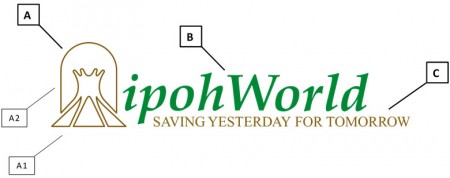An education-based, not-for-profit organisation established in 2004 to promote awareness and appreciation of Perak, the Silver State of Malaysia and its unique, diverse and rich heritage, with particular focus on Ipoh and the Kinta Valley, the seeds of ipohWorld were sown, over a glass of beer, in the FMS Bar when a Star reporter asked a group of Expats what they thought about Ipoh. Inevitably the subject of heritage cropped up and the newspaper article printed one Expat’s concern about Ipoh’s appalling lack of interest in local heritage. Those seeds germinated, with assistance from one local lady, and Ipoh World was born! There were two objectives and these remain extant today: First, to save, record and make available to the public worldwide, the accurate local history of Ipoh and the Kinta Valley and secondly establish an Ipoh Heritage Centre.
In 2006 we ran our first public exhibition “The Story of Ipoh: From Feet to Flight”, in cooperation with Darul Ridzuan Museum. Since then, we have run several more exhibitions while continuing to seek further financial support for a permanent, lively and interesting heritage gallery for Ipoh, thus enhancing both education and tourism. Our wish to have a permanent exhibition came to fruition in February 2015 as we opened Ipoh World @ Han Chin Pet Soo, our first permanent exhibition which on its own is a major achievement as it is one of only four Hakka museums in the world. We continue work towards this target. Thanks to our generous sponsors, we have gathered a broad variety of local photographs, postcards, documents, artifacts and supporting information from world-wide sources. As the collection grew, disciplined recording, preservation and control became essential. Thus, an information archive in the form of a unique, searchable digital database was born, supported by original research and available information from acknowledged and credible sources, The database has recently received a major software update to cope with the ever increasing number of entries. This archive is available for public viewing via http://www.ipohworld.org. With the wealth of information therein we aim to assist students, authors, researchers and most important our young people of today and tomorrow to understand what made our State tick over the past 150+ years, while at the same time promoting the Kinta Valley to the world, once vaunted the richest tin mining area in the world. To date we have documented more than 9000 items in our archive covering a wide range of subjects across the broad spectrum of heritage and social history, based on photographs, documents, interviews, artifacts, books E-books and videos. More items are be added regularly. In line with present communication trends, we have also created an interactive weblog (Ipohworld’s World) to publish stories, personal experiences and to highlight heritage issues as they occur around our valley. Through the weblog, we hope to facilitate discussion between our readers and encourage those with an interest in Perak to share their stories and pictures with others. We also welcome visitors to submit original contributions on any aspect of heritage or social history relevant to our area to enrich the content of our blog.
Meaning behind Ipoh World Logo

- The Logo
The logo of Ipoh World Sdn. Bhd. is the combination of two images that depict / represent Ipoh. A1 is an image of the Bulatan Sultan Yussof fountain which is one of the landmark structures of Ipoh and A2 is an image of a five foot-way that can still be found along most Ipoh shop houses today. The combination of these two images in a very big way signify Ipoh through its recognizable landmarks. The logo was designed by Peter Wang Shaoming.
- ipohWorld
The name ‘Ipoh World’ signifies an interactive heritage center where it is both historical and entertaining for visitors of all ages. It also functions in promoting education and tourism to the rest of the world through telling the story of Ipoh.
- Saving Yesterday for Tomorrow
The slogan ‘Saving Yesterday for Tomorrow’ represents our pledge in saving the history of yesterday for future generations by recording historical items such as artifacts, photos, documents, etc. on our database.
What is Heritage?
- Heritage is our inheritance from the past, the things we live with today, and whatever we pass on to future generations. It includes the natural environment, the built environment, movable artifacts/ephemera and our customs, languages and beliefs. It is today’s communities who decide which parts of this inheritance they value and wish to preserve for their descendants.
- Heritage is an irreplaceable source of life and inspiration. Everything we discard today will be gone forever.
- Heritage is a resource: a resource that can be developed and worked with in the same way we use other raw materials. It is all around us, waiting to be harnessed for our good, while reminding us about our past.
- Heritage belongs to everybody, irrespective of the territory on which it is located.
What is Social History?
Social History goes hand in hand with heritage as it emphasizes our understanding of:
- The growth of our society.
- Everyday people and their lives and families.
- Those who are often excluded from political and military history.
Why conserve our heritage and record our social history?
Both heritage and social history provide important reminders of where we have come from; the physical evidence of the past, our family history and the origins of our community, linking it with past attitudes and values that have shaped our environment. They help us to feel proud our roots, and to reinforce the identity we have in relation to the outside world. Each generation has a responsibility to protect them both for future generations.
